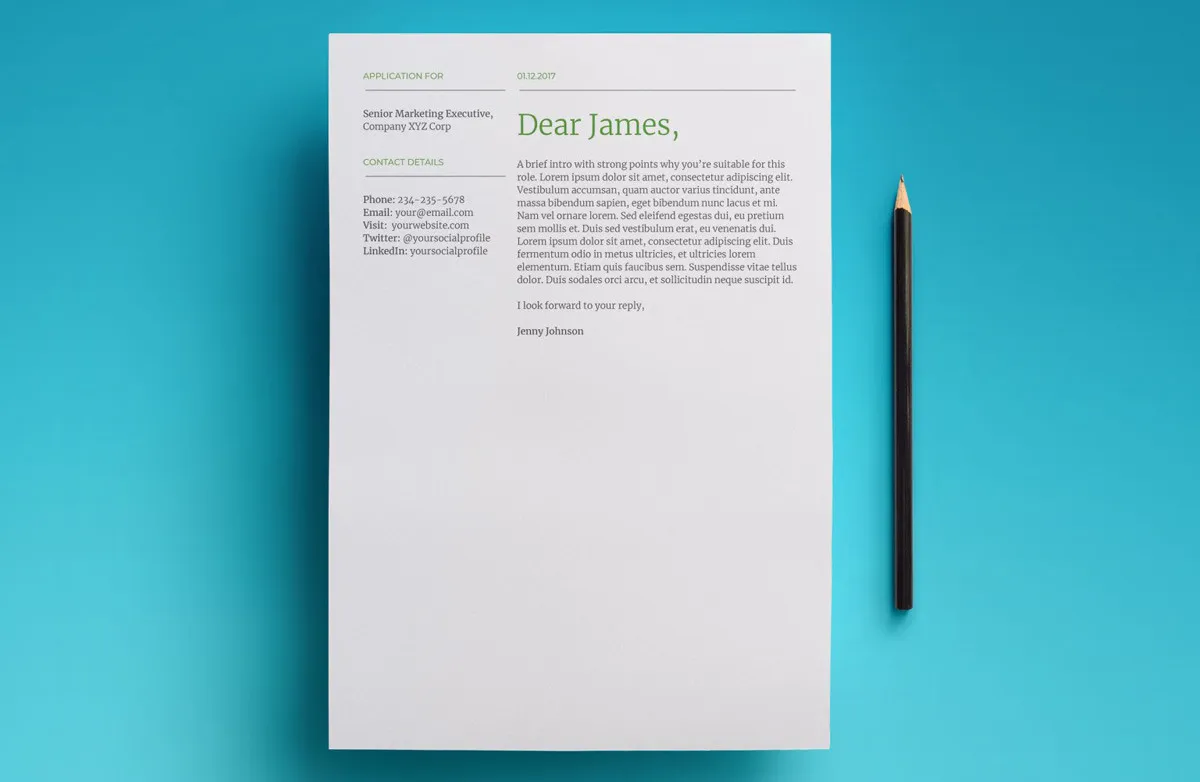What is a Cover Letter Template
A cover letter template is a pre-designed document that provides a framework for writing a cover letter. It serves as a starting point, offering a structure, format, and sometimes even suggested wording, to help job seekers create a professional and effective cover letter quickly. Templates are available in various formats, including Microsoft Word, Google Docs, and online platforms, catering to diverse needs and preferences. They can be tailored to specific industries, job types, or individual preferences. Using a cover letter template streamlines the writing process, ensuring that all essential elements are included, and helping job seekers make a strong first impression on potential employers. They are an invaluable resource for anyone looking to present themselves effectively in the job market, and it helps to avoid common pitfalls while crafting their cover letter.
Benefits of Using a Cover Letter Template
Utilizing a cover letter template offers numerous advantages for job seekers, making the application process more efficient and effective. The benefits extend beyond mere convenience and contribute significantly to the overall quality and impact of the job application. From saving time to presenting a polished and professional image, the advantages of using a cover letter template are numerous, enhancing the applicant’s chances of success in a competitive job market. Understanding these benefits is crucial for anyone looking to maximize their potential and secure their dream job.
Time-Saving
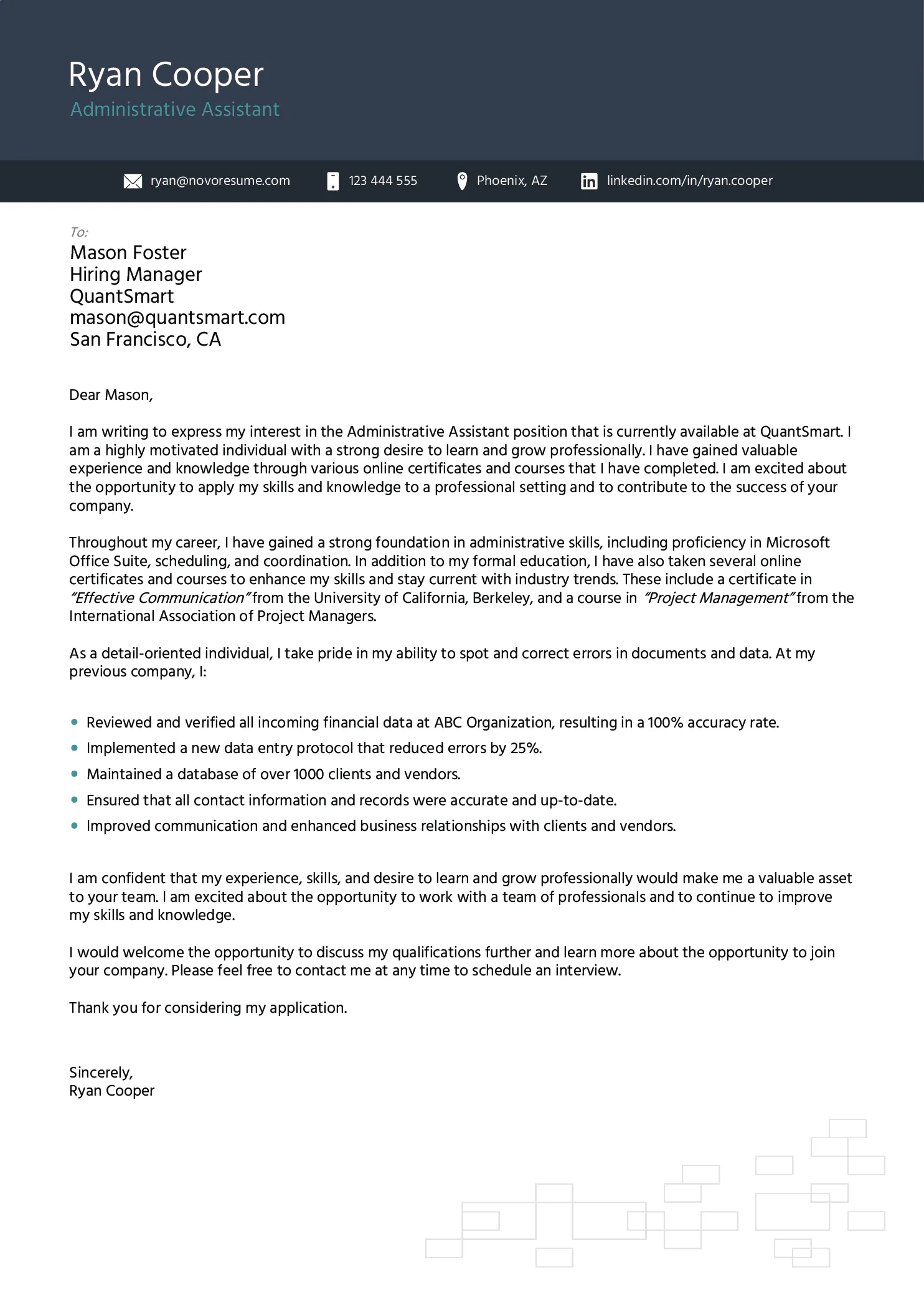
One of the primary benefits of using a cover letter template is the significant time savings it offers. Starting from scratch can be a daunting and time-consuming task, especially when applying for multiple positions. A template provides a pre-formatted structure, saving valuable time and effort. This allows job seekers to focus on personalizing the content to match specific job requirements and highlight relevant skills and experiences. The structured layout guides the writing process, preventing the feeling of being overwhelmed and streamlining the overall application procedure, ensuring efficiency. With a template, applicants can quickly adapt the content, making the application process far more manageable and less time-intensive.
Professionalism
Cover letter templates are often designed by professionals, ensuring a polished and professional presentation. They incorporate best practices in formatting, layout, and content organization. The pre-designed structure guides the user in presenting their qualifications effectively, creating a positive first impression. Templates help maintain consistency in the application materials, reinforcing a cohesive and professional image. Using a template helps avoid common formatting errors and ensures that the cover letter looks clean, organized, and visually appealing. This professional presentation significantly enhances the applicant’s credibility and increases the likelihood of getting noticed by potential employers.
Customization
While templates offer a framework, they also provide ample opportunity for customization. Job seekers can personalize the content to match the specific requirements of each job application. This includes tailoring the language, highlighting relevant skills, and addressing the needs of the employer. Customization allows applicants to showcase their unique strengths and qualifications, making them stand out from the competition. Templates provide flexibility in adapting the content, ensuring that each cover letter is relevant, engaging, and compelling. By customizing the template, applicants demonstrate attention to detail, reflecting their genuine interest in the position and the company.
Key Components of a Cover Letter Template
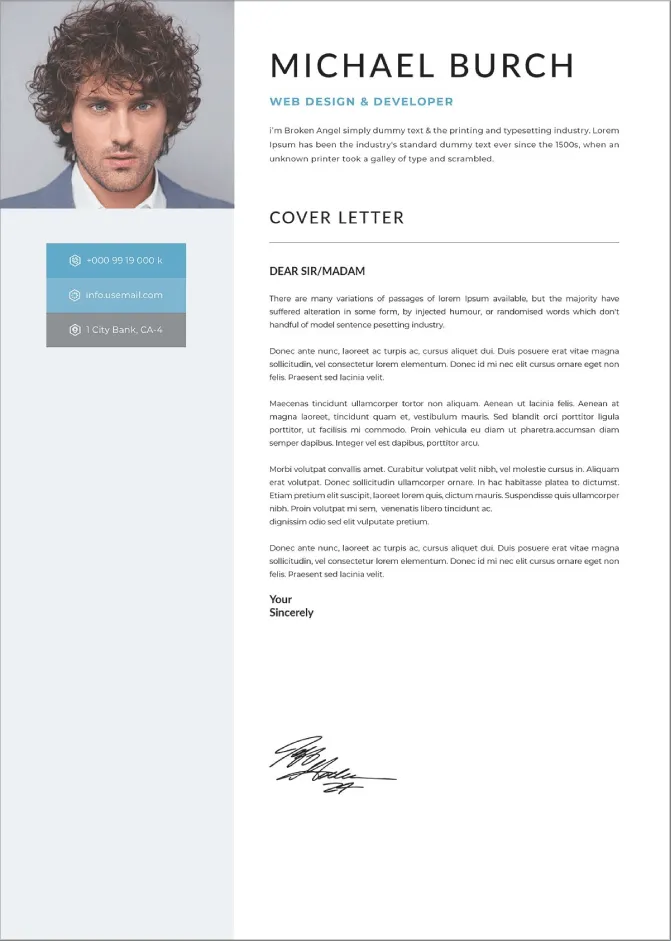
A well-structured cover letter template includes several essential components to effectively communicate an applicant’s qualifications and interest in a job. These components work together to create a concise, professional, and persuasive document. Understanding these key elements is crucial for anyone using a template, ensuring that all necessary information is included and presented appropriately. The following sections describe the essential elements.
Contact Information
At the top of the cover letter, the applicant’s contact information should be prominently displayed. This includes the full name, address, phone number, and email address. This information allows the hiring manager to easily contact the applicant if they are selected for an interview. Make sure the contact information is accurate and up-to-date. It is important to use a professional-looking email address to make a positive first impression. Proper contact information ensures that the applicant is readily reachable and avoids potential communication delays or issues, which can negatively impact their chances.
Date and Salutation
The date should be included directly below the contact information. The correct format is often month, date, and year. Following the date, use a formal salutation to address the hiring manager or the person mentioned in the job posting. If a specific name is available, use “Dear [Hiring Manager’s Name]”. If not, use a general greeting like “Dear Hiring Manager” or “Dear [Company Name] Hiring Team.” Proper salutations show professionalism and attention to detail. It demonstrates respect and helps to establish a positive tone right from the beginning of the cover letter.
Body Paragraphs
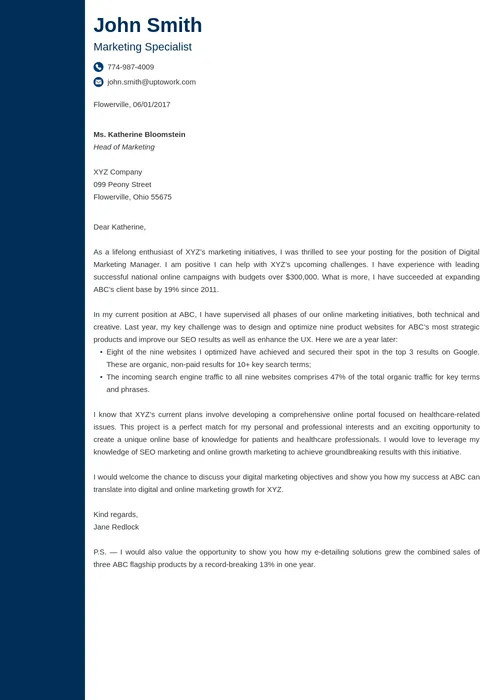
The body paragraphs are the core of the cover letter, where the applicant highlights their qualifications and expresses their interest in the position. The first paragraph typically introduces the applicant and states the specific job they are applying for. The following paragraphs should focus on relevant skills, experiences, and accomplishments, using concrete examples to demonstrate capabilities. Tailor the content to match the job description, emphasizing how the applicant’s qualifications align with the requirements. The body paragraphs should be concise, well-structured, and persuasive, making a strong case for why the applicant is the best fit for the role. Maintain a positive and enthusiastic tone throughout.
Closing and Signature
The closing paragraph should summarize the applicant’s interest in the position and reiterate their enthusiasm. It should also express gratitude for the hiring manager’s time and consideration. Use a professional closing, such as “Sincerely” or “Best regards,” followed by the applicant’s typed name. If submitting a physical copy, leave space for the signature above the typed name. This final section ensures that the cover letter ends with a positive, professional, and memorable note, showing respect for the hiring manager and a clear desire to move forward in the application process.
Step-by-Step Guide to Using a Cover Letter Template
Using a cover letter template effectively involves a structured approach to ensure the document is personalized, professional, and compelling. Following a step-by-step guide can help job seekers create a cover letter that stands out and successfully showcases their qualifications. From choosing the right template to proofreading the final draft, each step contributes to the overall impact of the cover letter.
Choose a Template
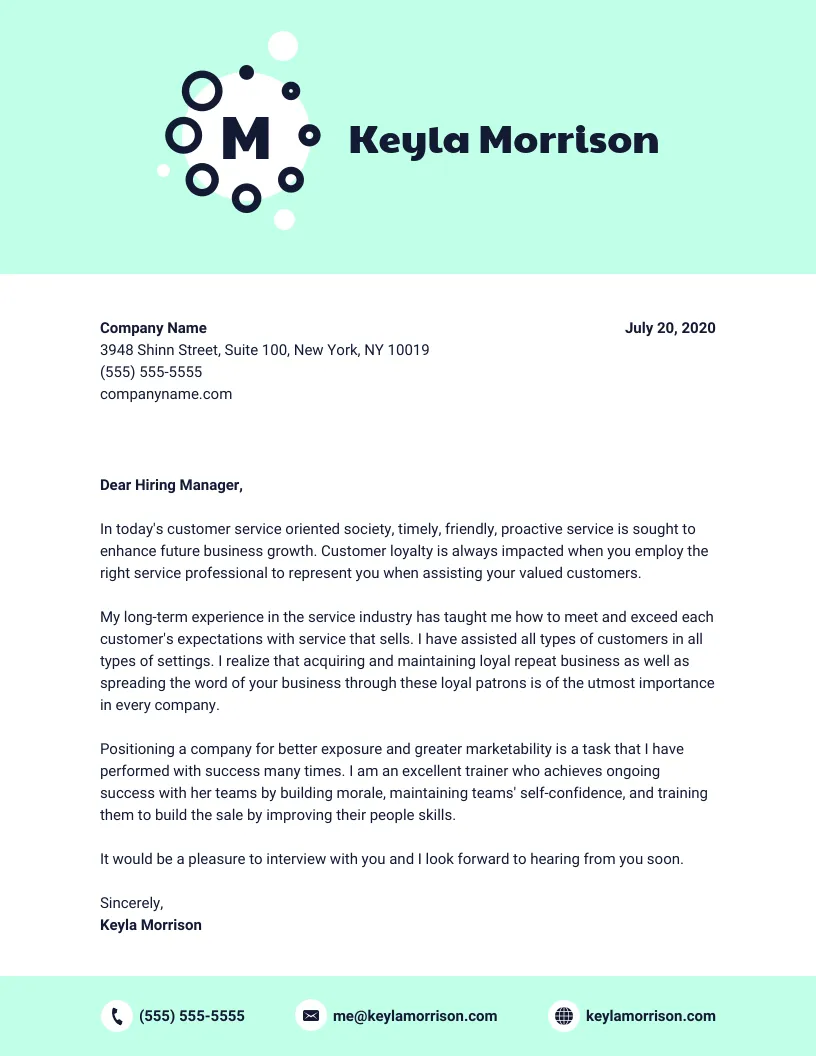
Begin by selecting a cover letter template that aligns with the job and your industry. Consider the formatting, style, and layout to ensure it suits the position. Choose a template that is easy to customize and allows for the inclusion of your specific information and experiences. Many online resources offer a wide variety of templates, from simple and clean designs to more elaborate and visually appealing options. Make sure that the template is compatible with your word processor or preferred document creation software. Evaluate several templates before deciding on one that matches your personal and professional preferences, so that you can be sure to project the right kind of tone.
Personalize the Template
Once you have selected a template, personalize it to match the specific job requirements and highlight your relevant skills. Replace the generic placeholders with your information, including contact details, job title, and company name. Tailor the content to address the specific needs and requirements of the job description. This involves adjusting the language, highlighting relevant skills, and providing concrete examples of your accomplishments. Ensure that the cover letter reflects your unique qualifications and shows genuine interest in the position. By tailoring the content, you can create a cover letter that stands out and makes a strong impression on potential employers.
Proofread and Edit
Thoroughly proofread and edit the cover letter to eliminate any typos, grammatical errors, or formatting inconsistencies. Check for clarity, conciseness, and coherence throughout the document. Ensure that the tone is professional and that the language is appropriate for the target audience. Verify that all information is accurate, and that the contact details are correct. A well-edited cover letter demonstrates attention to detail and professionalism. It shows that you are serious about the application and take the time to present yourself effectively. Proofreading and editing are essential to create a polished and compelling cover letter that enhances your chances of success.
Best Practices for Cover Letter Templates
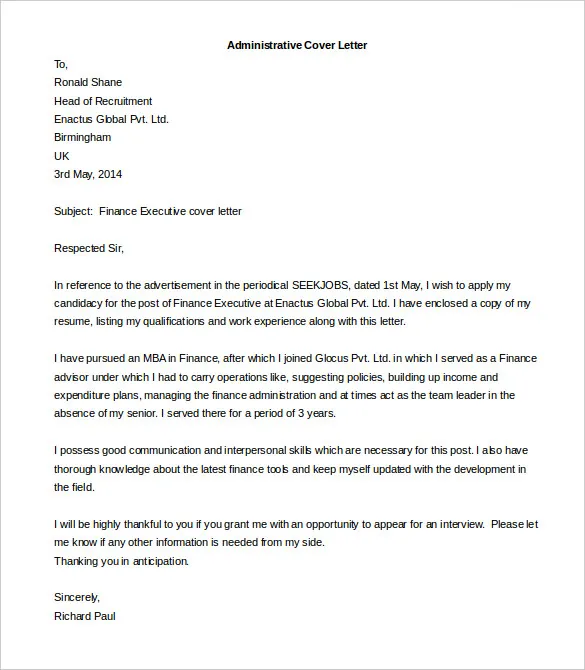
To maximize the effectiveness of a cover letter template, consider these best practices to ensure that the document is impactful and well-received by hiring managers. These recommendations cover various aspects, from tailoring content to the specific job requirements to maintaining a professional tone.
Tailor to the Job
Adapt the template to match the specific requirements of each job application. Carefully review the job description and highlight the skills, experiences, and qualifications that align with the employer’s needs. Use the language of the job description to demonstrate a clear understanding of the role. Avoid using a generic cover letter; instead, customize the content to show how your abilities and experiences directly address the employer’s requirements. The more you tailor your cover letter, the greater the chances of the applicant getting noticed and selected for an interview. This shows you have taken the time to understand the position and are a good fit for the company.
Highlight Relevant Skills
Emphasize the skills and experiences that are most relevant to the job. Use specific examples and quantifiable achievements to demonstrate your capabilities. Instead of simply listing skills, provide concrete instances where you have utilized those skills to achieve positive results. Highlight experiences that align with the job responsibilities and show how you can contribute to the company’s success. Tailor the content to showcase your unique strengths and how you can bring value to the organization. Ensure your cover letter gives the reader an easy path to understanding your value as an employee, so they can easily grasp the value you can bring to their company.
Show Enthusiasm
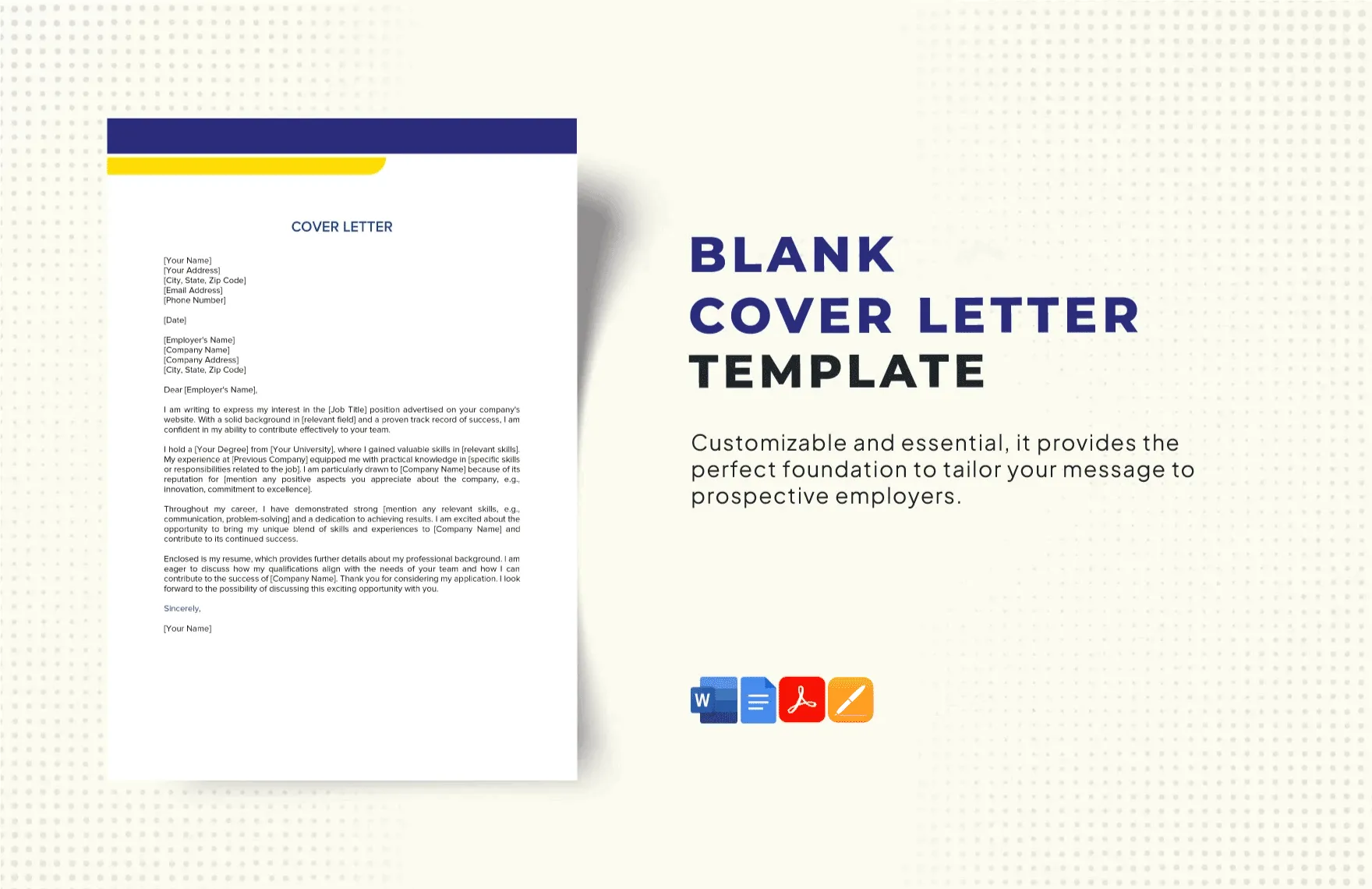
Express genuine enthusiasm for the position and the company. Show that you are excited about the opportunity and passionate about the work. Demonstrate your knowledge of the company and explain why you are interested in working there. A positive and enthusiastic tone can significantly enhance the impact of your cover letter. Enthusiasm demonstrates your interest and helps to make a positive impression on the hiring manager. Convey your eagerness to learn and contribute to the company’s goals. This passion helps the hiring manager to understand why you chose their company and why you are the best fit.
Common Mistakes to Avoid
Avoiding common mistakes is critical for a successful cover letter. Being mindful of these pitfalls can help job seekers create a document that is polished, professional, and effective. The following mistakes should be avoided.
Generic Content
Avoid using generic content that does not align with the specific job requirements. Tailor the cover letter to the specific position, highlighting the relevant skills and experiences. A generic cover letter appears impersonal and demonstrates a lack of interest. Instead of reusing the same letter for every application, personalize the content to match each job description. This shows attention to detail and demonstrates that you genuinely care about the specific opportunity. Ensure your cover letter makes it clear that you have read and understood the job requirements and that you can bring value to their company.
Typos and Grammatical Errors
Typos and grammatical errors can severely damage the credibility of the cover letter. Always proofread the document carefully, and consider asking someone else to review it as well. Errors reflect negatively on the writer’s attention to detail and professionalism. Use spell-check and grammar-check tools, but do not rely on them entirely. A thorough proofreading process ensures that your cover letter is polished and error-free. Pay special attention to punctuation, capitalization, and sentence structure. A clean and well-edited cover letter makes a positive impression and increases the chances of getting noticed by potential employers.
Ignoring the Job Description
Do not ignore the details provided in the job description. Carefully review the description and address the specific requirements, skills, and qualifications that the employer is seeking. A cover letter that does not align with the job description suggests a lack of understanding of the role. Highlight the relevant skills, experiences, and accomplishments that demonstrate how you can contribute to the company’s success. Customizing your cover letter to the job description shows you have taken the time to learn what the company is looking for in a candidate. It also helps you to stand out from other applicants, increasing the chances of being selected for an interview.
Where to Find Cover Letter Templates
Various online and offline resources offer a wide array of cover letter templates, from free options to premium designs. Finding the right template can significantly streamline the writing process and ensure a professional presentation. The options are numerous. These resources cater to diverse needs and preferences, providing a solid foundation for creating a compelling cover letter.
Online Resources
Many websites provide free and premium cover letter templates. Some popular platforms include resume builders, job search websites, and professional writing services. These websites offer a variety of templates in different styles and formats, catering to various industries and job types. Explore the template options and select a design that aligns with your professional image. Review sample cover letters and customize the chosen template to include your specific information and experiences. Utilizing online resources can save time and effort while ensuring access to high-quality, professional-looking templates. The choice of templates can be broad, so select the ones that suit your career and desired jobs.
Microsoft Word
Microsoft Word offers a collection of built-in cover letter templates. These templates are readily available and can be easily customized to suit your specific needs. Open a new document in Word and search for cover letter templates. Choose a template that fits your desired style and begin personalizing it with your information. Using Microsoft Word templates ensures that the cover letter is compatible with other standard formats. They allow you to format the document according to your specific preferences. These templates are a quick and convenient option for creating professional cover letters.
Conclusion
Utilizing a cover letter template is a strategic approach to creating a professional and effective job application. From saving time and ensuring a polished presentation to providing structure and guidance, templates offer many advantages. By understanding the key components, following the best practices, and avoiding common mistakes, job seekers can create cover letters that make a strong impression. Choosing the right template, personalizing the content, and proofreading thoroughly are essential steps to securing an interview and advancing in the job search. Embrace cover letter templates as a valuable tool, and set yourself up for success in your career journey.
